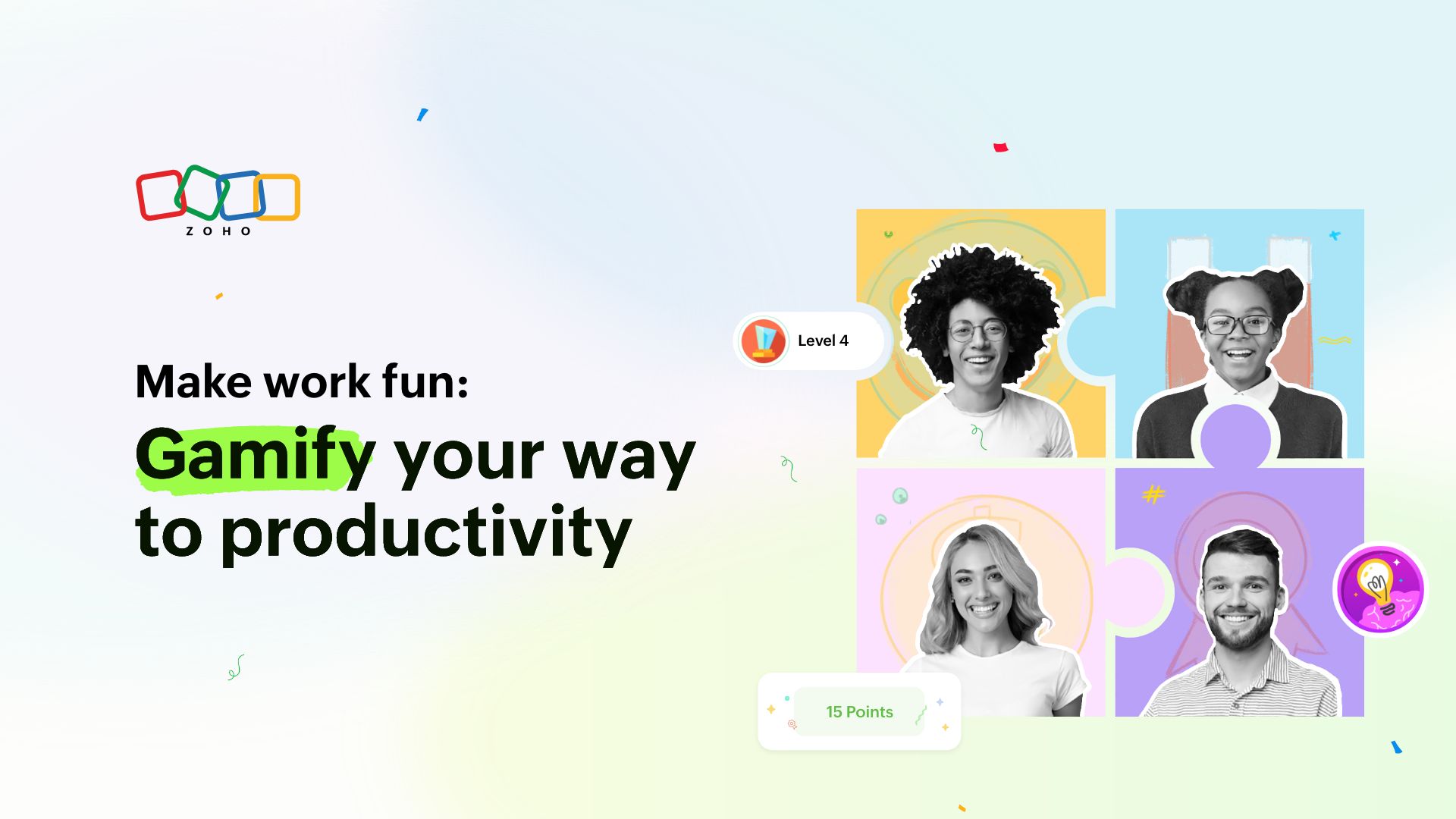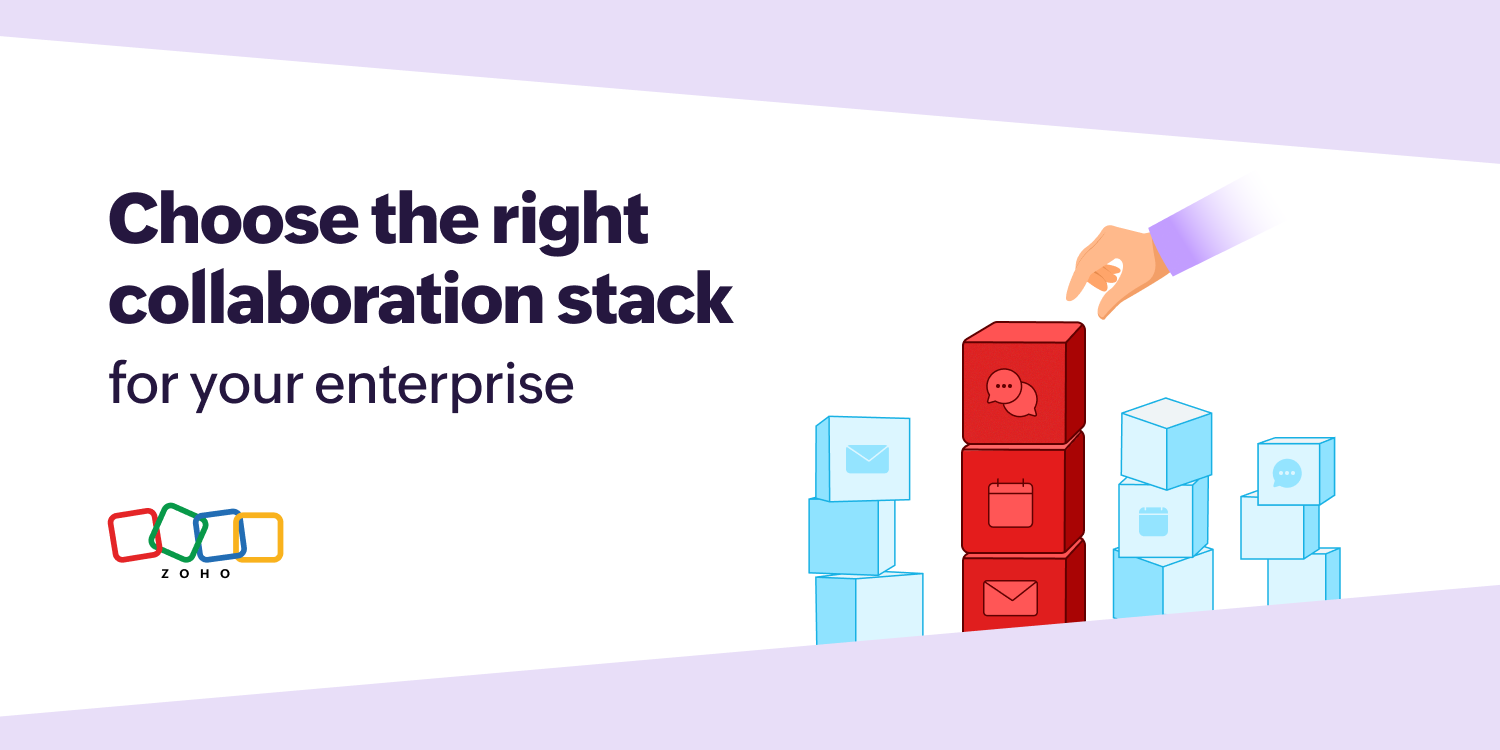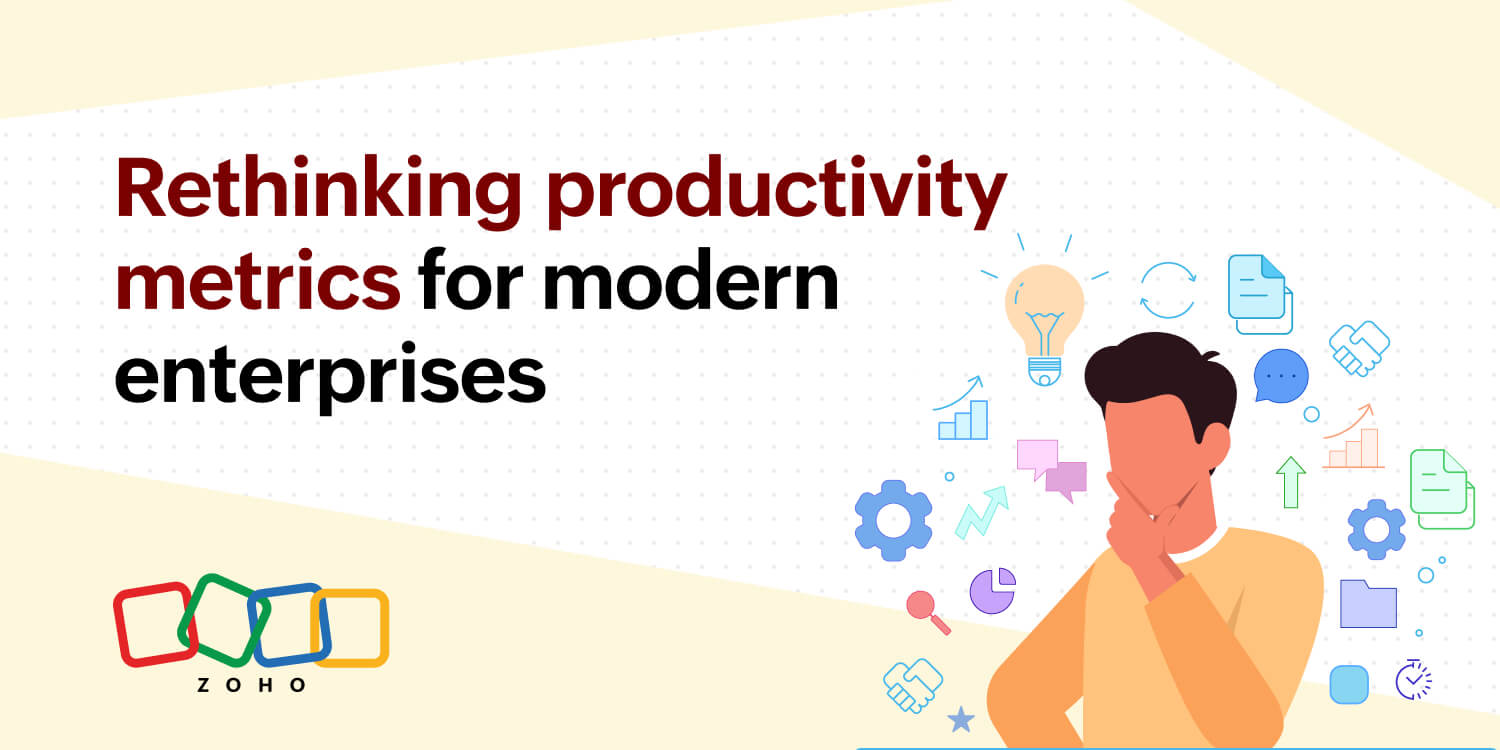- HOME
- All Topics
- Productivity in the workplace
- Make work fun: Gamify your way to productivity
Make work fun: Gamify your way to productivity
- Published : December 26, 2024
- Last Updated : March 24, 2025
- 1.3K Views
- 8 Min Read
There's one moment I remember vividly from my childhood. I must have been in the 4th or 5th grade. It was a Sunday. The movie Hulk was premiering on TV. Being the self-proclaimed superhero enthusiast I was (and still am), I was determined not to miss a single moment. But my dad, as it turned out, had other plans. (Spoiler alert: I watched it!)
He laid out the terms: I must study a chapter in mathematics, and if I was able to solve one problem he picked at random, I'd get to watch the movie. A challenge had been issued, and I wasn't about to lose. The reward was too tantalizing.
I won. I got up early, way earlier than I had on any other Sunday, studied with a laser-sharp focus, and solved the problem. I jumped up and down when Bruce Banner transformed into Hulk for the first time.
Let's be honest, who doesn't love a good incentive? A little reward goes a long way in motivating us, don't you think?
So, what if your daily to-do work list felt more like a game you couldn’t wait to play? You earn points for completing tasks, unlock rewards for hitting milestones, and even level up as you progress. That’s the power of gamification.
In this article, we’ll explore how gamification works, practical strategies to apply it to your tasks, tools that can help, and the tangible benefits it brings. Whether you’re struggling with procrastination, feeling uninspired, or simply looking for ways to enhance productivity, gamification may just be the solution you need.

So, what is gamification?
Gamification is the the process of injecting game-like elements into non-game contexts, like your daily routines and work tasks.
We're talking points, badges, leaderboards, and maybe even a virtual pet that will be sad if you don't hit your daily goal.
But don't let the playful tone fool you. Gamification is a powerful tool that can boost engagement, increase motivation, and even encourage a healthy sense of competition.
Why does gamification work?
A study shows that 83% of employees who have gamified training feel motivated, while 61% of those who get regular training with no gamification are bored.
Gamification works because it sneakily taps into our inner child's love for play, even when we're supposed to be "adulting." It's like hiding vegetables in a smoothie–you're still getting the good stuff (engagement, motivation, learning), but it tastes a whole lot better.
Here's the breakdown of why it's so effective:
It makes things fun: Let's face it, most tasks aren't inherently thrilling. Gamification adds elements like points, badges, leaderboards, and challenges to turn mundane activities into engaging experiences.
It creates the dopamine effect: Every time we complete a task and achieve a small win, our brain releases dopamine–the “happy chemical” associated with pleasure and motivation. Gamification creates more opportunities for these small wins, keeping you energized and focused.
It provides a sense of progress and accomplishment: As humans, we love feeling like we're achieving something. Gamification offers clear goals, feedback, and rewards, giving us that sweet sense of accomplishment as we level up or earn a badge.
It taps into our natural competitiveness: Whether we admit it or not, most of us have a bit of a competitive streak. Gamification can create healthy competition, motivating us to perform better and strive for that top spot on the leaderboard.
It offers a sense of control and autonomy: Gamification often involves choices and challenges, giving us a sense of control over our own progress. This autonomy can be incredibly motivating because we feel more invested in the outcome.
Gamification techniques to boost productivity
Gamification isn't about turning your office into an arcade (but wouldn't that be fun?), but rather strategically applying game design elements to boost engagement and, consequently, productivity.
Here are some actionable ways you can bring gamification into your task management and daily routine:
1. Points, Badges, and Leaderboards (PBLs)
These are the classic gamification trifecta.
Assign points to tasks based on their difficulty or importance. For example:
- Small tasks (e.g., sending an email): 10 points
- Medium tasks (e.g., writing a report): 50 points
- Large tasks (e.g., completing a project): 100 points
Set milestones for points and create rewards for reaching them.
- Earn 200 points? Take a coffee break.
- Hit 500 points? Watch an episode of your favorite show.
Compete with yourself or with others. One study found that adding gamified elements such as sales contests and leaderboards boosts sales representatives to generate more sales, leading to a 3.5x increase in performance levels.
- Set weekly or monthly goals and keep track of progress with a leaderboard.
- Compete with friends or coworkers to complete tasks the fastest or most efficiently.
Just remember, keep the competition healthy–we're aiming for motivation, not office feuds.
2. Time-based challenges
- Use time limits to turn tasks into challenges. The Pomodoro Technique (25-minute focus sessions followed by 5-minute breaks) works well for this.
- You can treat each focus session as a “round” in a game. Your goal: complete as much as possible before the timer runs out.
- Reward yourself for consecutive focus sessions completed without distraction.
3. Progress bars and levels
Seeing a visual representation of your progress can be incredibly motivating.
Break larger tasks or projects into smaller milestones (e.g., Level 1: Research, Level 2: Drafting).
Use visuals to track your progress, such as:
- Badges for completing specific milestones.
- Progress bars or charts to show how far you’ve come.
The key to successful gamification is to tailor the techniques to your preferences. What works for one might not work for another. So, experiment, adapt, and find what motivates you best.
The benefits of gamifying your tasks
1. Increased engagement
Let's be honest, some tasks are about as exciting as watching paint dry. Gamification adds elements like points, badges, and challenges to make even the most boring tasks more engaging. Suddenly, spreadsheets become a quest for data mastery, and emails transform into strategic communication missions.
2. Improved motivation
Gamification provides clear goals, feedback, and rewards, which can significantly boost motivation. Seeing your progress, earning badges, and climbing leaderboards provides a sense of accomplishment and encourages you to keep going.
3. Enhanced productivity
A whopping 90% of employees say gamification makes them more productive at work.
When you're engaged and motivated, productivity naturally follows. Gamification can help you focus, prioritize, and complete tasks more efficiently.
4. Better learning and skill development
Gamification can make learning new skills more enjoyable and effective. By incorporating challenges, feedback, and rewards, it creates a more immersive and engaging learning experience.
5. Increased collaboration and teamwork
Shared goals, team challenges, and friendly competition can create a more positive and productive work environment.
Some of the best gamification apps
Want to gamify your projects, tasks, or even chores? These gamification apps can turn even the most mundane tasks into something you'll actually want to do. Here are a few to get you started.
Habitica
Habitica gamifies your daily habits by turning them into quests, rewarding you with experience points for completing tasks and leveling up your character. Miss a habit? Your health bar takes a hit, adding a playful sense of urgency.
With customizable avatars, virtual pets, and the option to join guilds with fellow adventurers, Habitica makes productivity feel less like a chore and more like a grand adventure.
Forest
Forest gamifies focus and productivity by transforming your smartphone into a virtual garden. When you need to concentrate, you "plant" a virtual seed. This seed grows into a beautiful tree over your designated focus period. However, if you succumb to the siren call of distractions and leave the app, your tree withers, symbolizing lost productivity.
Zoho Connect
Zoho Connect cleverly utilizes gamification to inject a bit of playful competition and motivation into the workplace. By awarding badges for various achievements, like "Trendsetter" or "Ideator," it subtly encourages employees to actively participate and contribute. Points and leaderboards add a friendly competitive element, turning everyday tasks into opportunities to climb the ranks.
3 gamification examples in a corporate setting
1. IBM
IBM's pilot program uses digital badges to incentivize course completion, and it's proved to be remarkably successful. The initiative, which awards badges upon finishing courses, has yielded significant improvements in learner engagement.
Course completions soared by 226% following the introduction of badges, while successful completion of end-of-course assessments saw an even more dramatic rise of 694%.
2. Microsoft
Microsoft sought to improve agent engagement and productivity in its contact centers. They introduced a program incorporating gamification, micro-learning, and personalized goals.
This resulted in a 12% drop in the absentee rate, a 10% increase in calls per shift, and a positive shift in agent perception, with 78% reporting increased empowerment.
3. Cisco
Black Belt's enablement program leverages gamification techniques, integrating elements such as points, badges, challenges, personalized avatars, and narrative themes to enhance user engagement.
One analysis indicates a correlation between Black Belt participation and partner growth. Those with 30% employee involvement experienced a 10% basis point faster growth rate, while partners demonstrating above-average participation saw a 3% acceleration in growth.
Final tips for making gamification work for you
So, you're ready to sprinkle some gamification magic into your workplace? Excellent! But before you unleash the virtual confetti, here are some final tips to ensure your gamification efforts don't fall flat.
- Know your audience (and yourself): What motivates one person might bore another to tears. Understanding your target audience (even if that audience is just you) is crucial. Are they competitive leaderboard climbers? Badge-obsessed collectors? Or simply motivated by clear progress and achievable goals? Tailor your gamification strategy accordingly. Don't try to force a square peg into a round hole.
- Start small and iterate: Don't try to gamify everything at once. Begin with a small, manageable project or task and test your approach. See what works, what doesn't, and adjust accordingly. It's like baking a cake–you don't start with a five-tiered masterpiece; you start with a simple cupcake and work your way up.
- Keep it relevant and meaningful: Gamification should enhance the task, not distract from it. The game mechanics should be relevant to the work being done and contribute to achieving real goals. Don't just add points and badges for the sake of it; make sure they actually mean something. Don't award a "Master Spreadsheet Wizard" badge for simply opening a spreadsheet.
- Provide clear rules and transparency: Everyone should understand how the gamification system works, how points are earned, and what rewards are available. Clear rules and transparency build trust and prevent confusion.
- Don't forget the fun: Gamification should be enjoyable. If it feels like a chore or adds unnecessary stress, it's not working. Keep it light, engaging, and fun. After all, the whole point is to make work more enjoyable.
Transform dull tasks into engaging challenges
So there you have it. Gamification offers a clever way to reframe our relationship with work, transforming humdrum tasks into surprisingly engaging challenges.
By strategically deploying game-like elements—think rewards, milestones, and progress tracking—we can nudge our brains into viewing even the most tedious to-dos as purposeful and, dare we say, enjoyable.
The secret sauce is personalization and consistency. Start small, perhaps with a simple points system or a daily "quest" to conquer your inbox. Gradually integrate what works into your routine.
Remember that the ultimate goal isn't just to make work more enjoyable (though that's a welcome byproduct), but to cultivate sustainable productivity and build positive habits that stick.
 Prashanth
PrashanthPrashanth is a Senior Product Marketer in the Zoho Workplace team who focuses more on Workplace productivity and how teams can work better. He loves bringing a creative element to his work. He enjoys traveling, writing, reading, and playing badminton.


